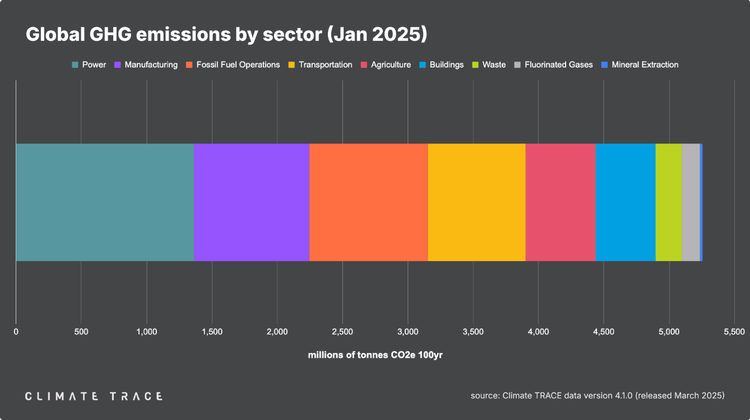Climate transition planning for compliance: a guide for CSOs

A transition plan outlining how a company expects to meet climate targets is the latest addition to an ever-expanding list of sustainability disclosures required by regulators around the world. Understanding minimum expectations and markers of quality is key for Chief Sustainability Officers to ensure compliance.
As they prepare to produce their first sustainability reports in line with the EU’s Corporate Sustainability Reporting Directive (CSRD) by early 2025, companies within its scope are also drafting what is likely to be their first robust climate transition plans.
So what exactly is a transition plan? On a recent call with CSO Futures, CDP CEO Sherry Madera defined a transition plan as needing to have a baseline and a time-bound target that is "very much encouraged to be science-based". "Then, you need to monitor and manage how it is that you're doing against the trajectory to that target," she added. Simple, right?
In 2022, 4,100 out of the 18,600 global firms that disclosed sustainability data through CDP’s climate change questionnaire said they had already developed a 1.5°C-aligned climate transition plan – but just 81 (0.4%) reported enough detail to all 21 key indicators that align with a credible climate transition plan.
“Only few companies are really prepared for the mandatory disclosure of transition plans that is coming now,” warns Tatiana Boldyreva, Head of Climate at CDP.
So what specific information is expected by regulators on transition plans? A look at the most relevant climate disclosure laws shows that this varies widely depending on the jurisdiction.
CSRD transition plan disclosure requirements
The European Sustainability Reporting Standards (ESRS), which governs how companies should report their climate impacts under CSRD, dives into the topic in its E1 standard on climate change.
Specifically, it states that the transition plans disclosed should:
- Include GHG reduction targets that are demonstrably 1.5ºC-compatible;
- Lay out identified decarbonisation levers and key actions planned, including changes in products and services and adoption of new technologies;
- Detail planned investments and funding mechanisms to support the implementation of the transition plan;
- Provide a qualitative assessment of the potential locked-in GHG emissions from key assets and products, as well as plans to manage associated risks;
- Explain how the transition plan is embedded in and aligned with the company’s overall business strategy and financial planning, and whether it is approved by its board and top management;
- Detail any progress made so far in implementing the plan.
Importantly, the ESRS also specifies that companies that do not have a transition plan in place shall indicate whether and when they plan to adopt one.
CSDDD transition plan disclosure requirements
In addition to the CSRD, the Corporate Sustainability Due Diligence Directive, which was approved in the European Parliament at the end of April, also makes it an obligation for companies under its purview to “adopt and put into effect a transition plan for climate change mitigation which aims to ensure, through best efforts, compatibility of the business model and of the strategy of the company with the transition to a sustainable economy and with the limiting of global warming to 1,5 °C in line with the Paris Agreement”.
Transition plans should contain time-bound climate targets for 2030 and then every five years until 2050. These targets should be based on science and “where appropriate”, they should be absolute emissions reduction targets for Scope 1, 2 and 3.
Like the ESRS, the text of CSDDD requires the disclosure of decarbonisation levers, key actions and investments, as well as transition plan governance. In fact, companies that already comply with CSRD are automatically in compliance with CSDDD’s transition plan disclosure requirements.
But CSDDD also reassures companies on the fact that targets laid out in transition plans are not legally binding: “While companies should strive to achieve the greenhouse gas emission reduction targets contained in their plans, specific circumstances may lead to companies not being able to reach these targets, where this is no longer reasonable.”
SEC and California transition plan disclosure requirements
The recently published (and already paused) climate disclosure rule by the US Securities and Exchange Commission (SEC) includes a loose requirement for listed companies to “describe a transition plan if it has adopted the plan to manage a material transition risk”.
The SEC offers little detail regarding the metrics expected in such transition plans, but does specify that these should be updated annually with actions taken during the year and how these have impacted the registrant’s business, results of operations, or financial condition.
It also requires companies to include “quantitative and qualitative disclosure” of material expenditures incurred, material impacts on financial estimates and assumptions as a direct result of the disclosed actions taken under the plan.
Unlike European regulations, the SEC rule does not require companies that have not adopted a transition plan to do so or to justify their decision.
Finally, California’s new climate disclosure regulations, known as SB 253 and SB 261, make no mention of climate transition plans, though SB 261 requires companies to prepare and submit a climate-related financial risk report every two years, which should include the measures they’re taking to mitigate these risks.
ISSB transition plan disclosure requirements
Information on transition planning disclosures can be found in IFRS S2 on climate-related disclosures, which states that companies should report on how they have responded or plan to respond to climate-related risks and opportunities, including how they plan to achieve any climate target it has set (either voluntarily or not).
Specific information to be disclosed includes:
- Current and anticipated changes to the business model and resource allocation;
- Current and anticipated direct and indirect mitigation and adaptation efforts;
- Any climate-related transition plan the entity has, as well as the key assumptions used in developing it and dependencies on which it relies;
- Details about how the company is funding and “resourcing” these activities
- Quantitative and qualitative information about progress achieved.
Europe appears to be going further than other jurisdictions to move companies along the climate transition – an observation shared by Andy Garraway, Climate Policy Lead at Risilience.
“It's very much an approach that’s saying: not only is transition planning important for you as a business, it's important for you to do it in a certain way. And what we’re seeing in the EU particularly is really setting that bar in terms of the ambition companies need to be achieving, and seeking to influence and drive corporate behaviour in a way that we're not seeing to the same extent in the US,” he tells CSO Futures.
Transition Plan Taskforce: the gold standard
But while these regulations make it relatively clear what is expected of companies, they give little guidance as to how they can deliver. This is where the Transition Plan Taskforce (TPT) comes in.
The taskforce was launched in April 2022 by the UK Treasury with the purpose of establishing “the gold standard for transition plans”. Two years later, and six months after the publication of its final TPT Disclosure Framework, it appears to have succeeded.
“We do believe it's a gold standard for companies to really look at and it's very likely that it will be the implementation guidance for everyone who is reporting against IFRS: it is best practice,” says Boldyreva, encouraging Chief Sustainability Officers across the globe to follow the guidance as “a good first step”.
Her comments are echoed by Garraway at Risilience, who sees the TPT Disclosure Framework as “a quality sense check” that’s been useful in encouraging companies to think more holistically about their transition plan: “It's more than just a set of targets,” says, noting that many of the consultancy’s clients are planning to use this tool to guide the development of their transition plans.
Developing this guidance was no easy feat. Ira Poensgen, Secretariat Technical Lead at the Transition Plan Taskforce, explains to CSO Futures: "The biggest challenge that we faced in drafting the recommendations was that we very quickly realised that the use cases for transition plans are quite broad, and that there's many different groups that are currently looking at transition plans as a tool that might help them, but from very different perspectives."
TPT Disclosure Framework: a single transition plan for different use cases
She notes that Chief Sustainability Officers and boards see transition plans as a management tool to support business transformation, investors use them as tool to make more informed investment decisions, while governments and regulators are interested in what these plans can tell them about where the world is heading, helping them identify risks and obstacles.
"What this meant for the TPT is that one of the circles that we had to square is to develop guidance that is mindful of those different use cases, while at the end of the day realising that what we want to get to is that a single company has a single transition plan, because it's about their core strategy for the future and how they're grappling with the uncertainties of the transition," she adds.
The result is a 45-page document that defines a good practice transition plan around the three principles of ambition, action and accountability. The framework provides details on five disclosure elements including implementation and engagement strategy, metrics and targets and governance, laying out exactly which type of information should be disclosed.
In addition, the TPT recently released sector-specific guidance to dive deeper into best practices for seven critical industries: asset managers, asset owners, banks, electric utilities and power generators, food and beverage, metals and mining, and oil and gas.
Transition planning compliance starts with transparency
TPT documents are valuable tools that can help Chief Sustainability Officers and their teams raise the bar of their transition plan disclosures and ensure compliance with current and future regulations.
Others are coming: EFRAG, for example, is currently preparing what it calls ‘transition plan implementation guidance’ to help companies comply with CSRD. A first draft is expected in May and will be open to public feedback for a final publication in November 2024.
CDP, which contributed to the development of the TPT framework by providing data on the type of information companies have been reporting so far, is now working to map interoperability between its own disclosures and the framework.
But it’s important to remember that transition plans are static documents meant to capture how a company positions itself in what is ultimately a fast-changing landscape full of less-than-accurate data and moving targets: plans will change, goals will be missed, and that is okay – as long as companies lead with transparency.
“It's about being very open and transparent about the assumptions that you're making, stating that and saying, ‘this is, to the best of our knowledge, accurate data’,” says Garraway.
Influencing the broader ecosystem
But admitting that a transition plan comes with dependencies and uncertainties should not give companies a free pass to rest on their laurels, warns Poensgen at the TPT. Instead, they should also disclose how they plan to use their influence to drive ecosystem change.
“Sometimes you might not have a lot of levers, but there's others where you might be able to make action more likely. A really important part of a credible transition plan is really clearly articulating not only where you have dependencies but also how you are using the engagement levers that you do have to make it more likely that the broader shift happens," she explains.
This article is part of a CSO Futures series on transition planning for Chief Sustainability Officers.







Member discussion